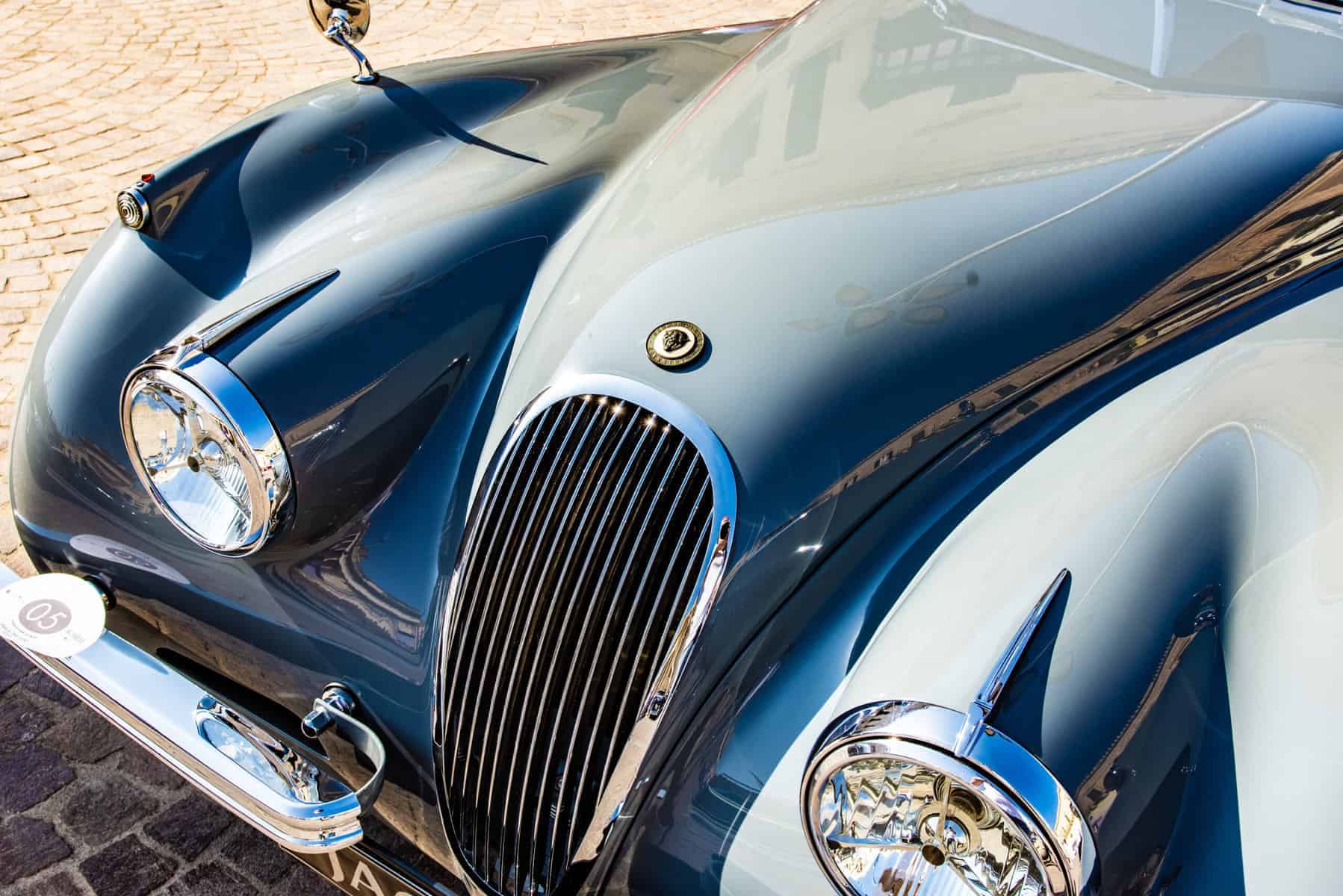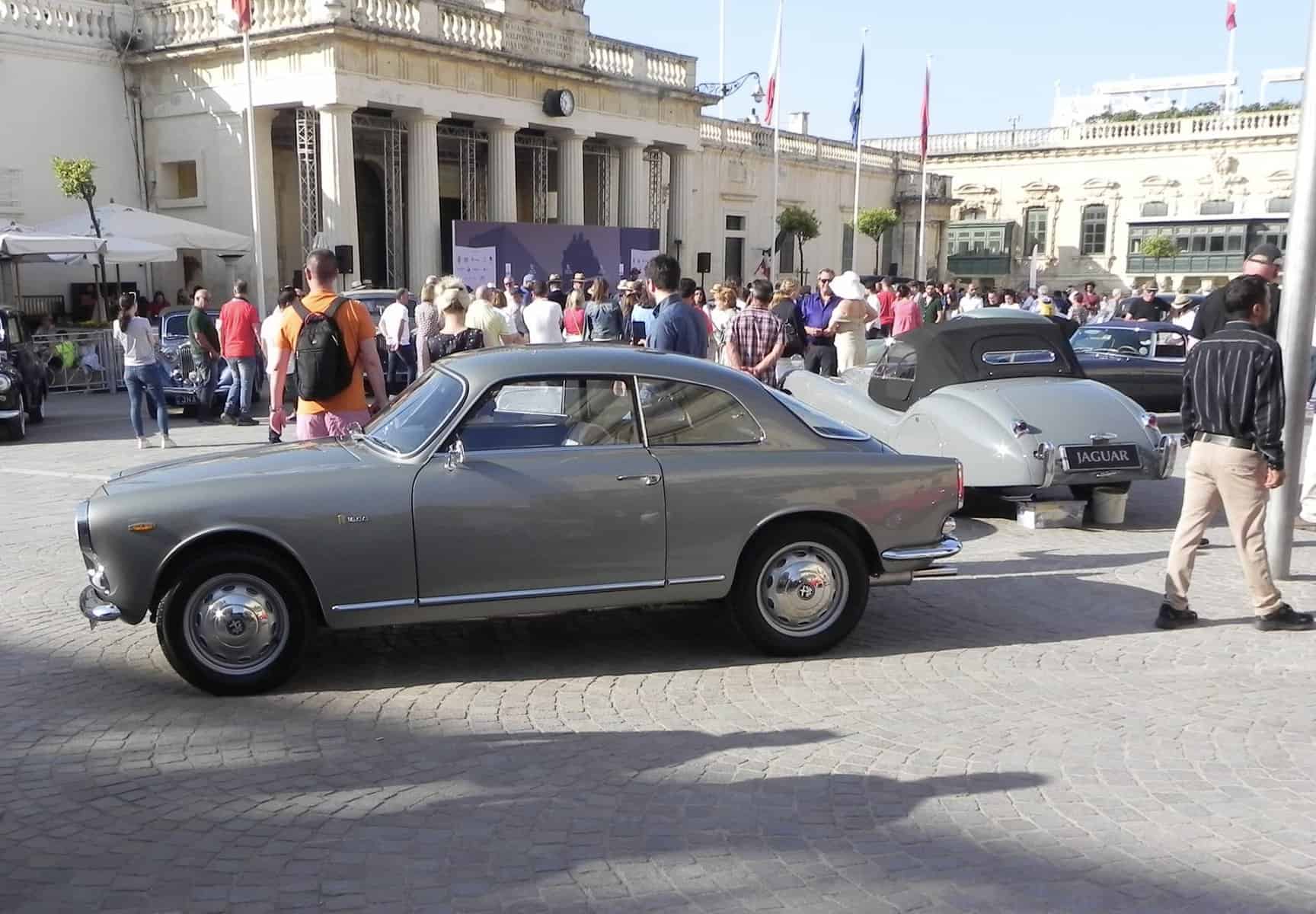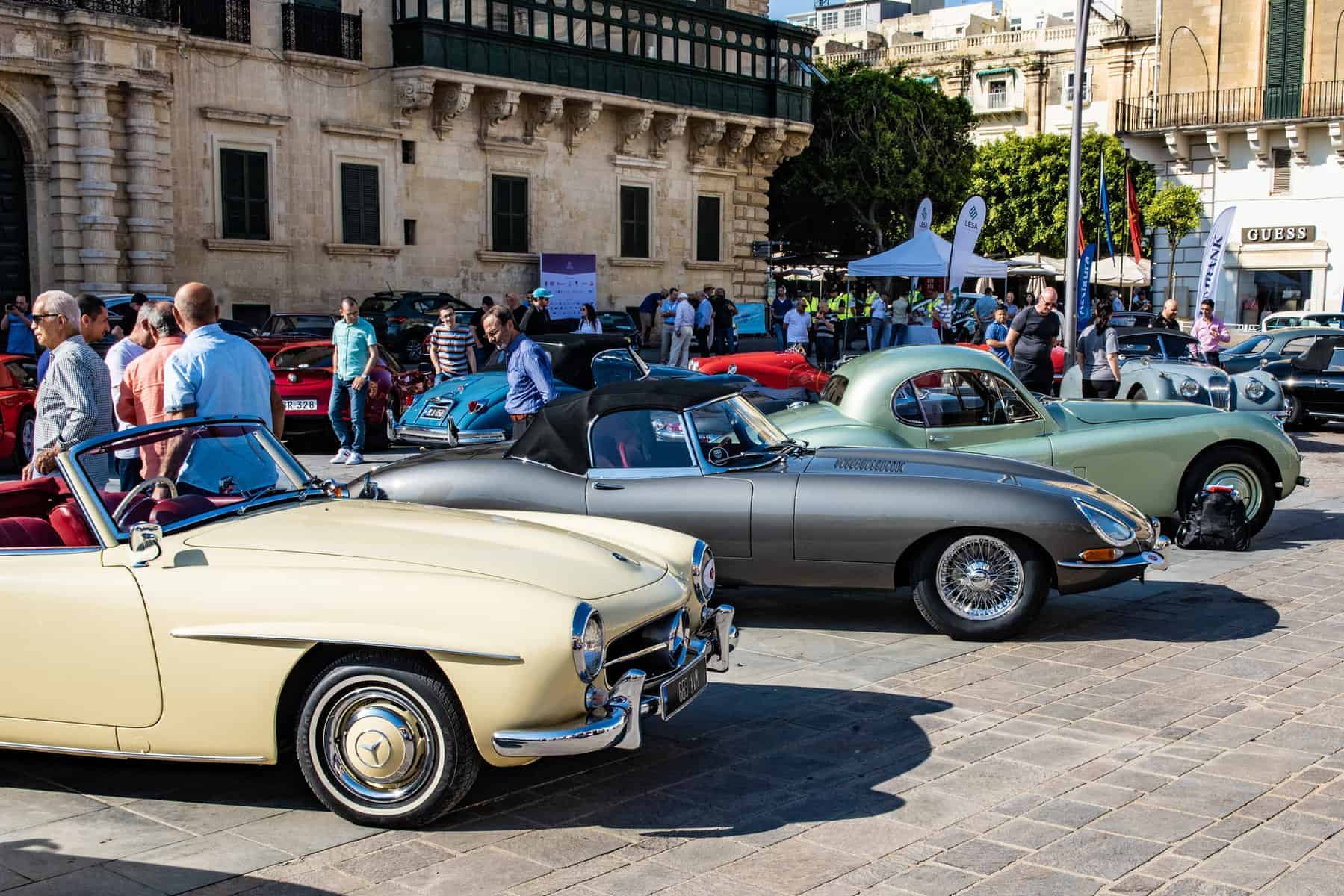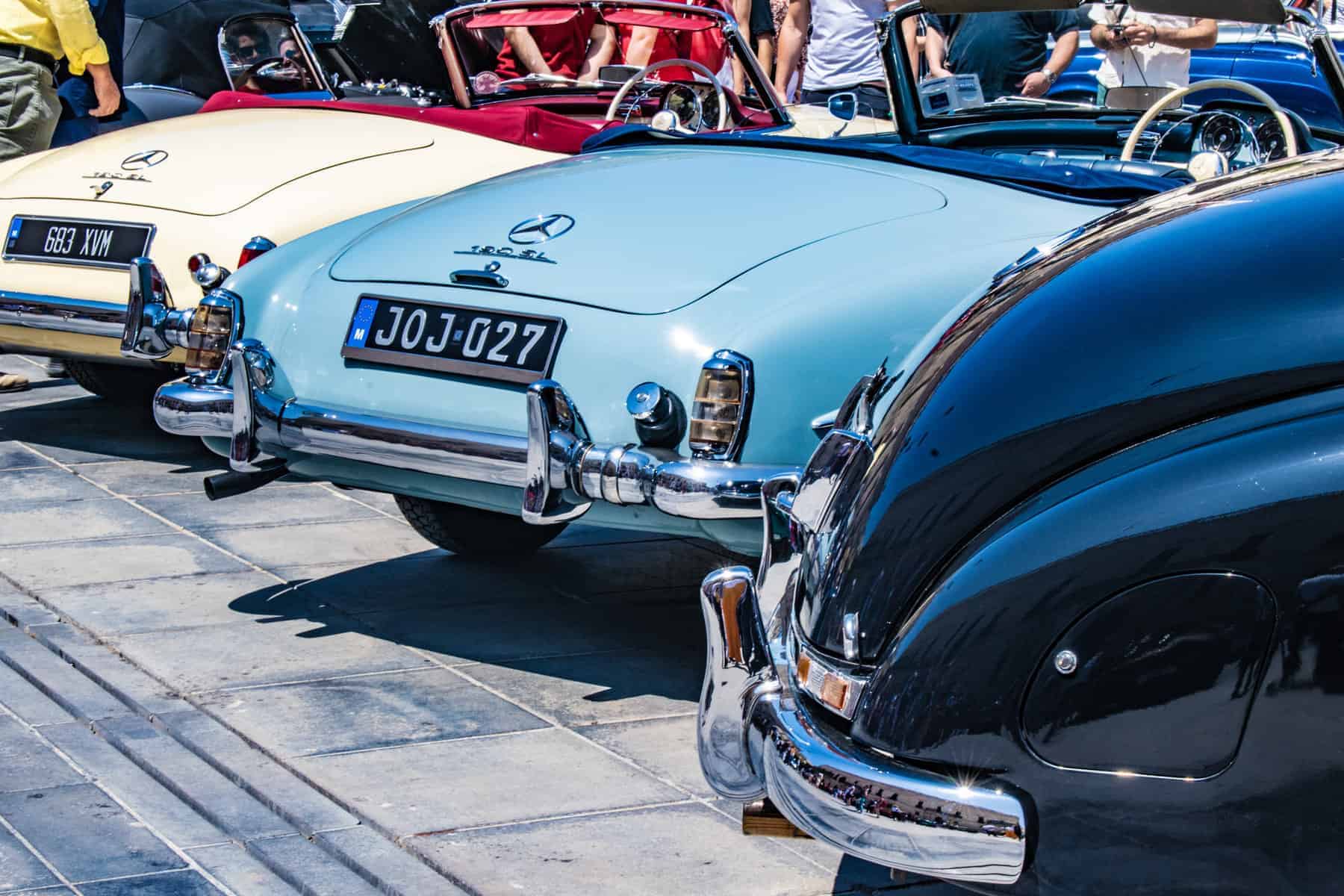Malta In May with Classic Cars and Caravaggio
Good friends, fine food, and extraordinary history at the 2023 Valletta Concours
WORDS & IMAGES BY: PETER STEVENS
Peter Stevens is one of the world’s best-known and most sought-after automotive designers. He is a consultant designer who is committed to the vital importance of design education. Alongside his consultancy, he lectures internationally and was until recently Visiting Professor at London’s Royal College of Art. Professor Stevens is well known as the designer of the acclaimed McLaren F1 road car which marked a paradigmatic shift in high performance car design. Produced between 1993 and 1997, the car remains extraordinarily influential.
Early May in Malta can be windy and even a little damp, but later in the month the sky clears, and you can take breakfast, lunch, and dinner out of doors. For Northern Europeans it is heaven. With a population of only around five hundred thousand, it is hard to believe that Concours organizer John Saliba and his brother Joel can come up with new treasures for the Valletta Concours every year; he says that out of three hundred fifteen thousand cars registered there are probably almost thirteen thousand older or classic cars on the islands of Malta and Gozo.
When I travelled with race teams to events throughout Europe, Japan, and the Americas, I hated the gruelling program of airport-hotel-track-hotel-track-airport, it almost felt rude to use a fascinating location purely for our own purpose. I always tried to either arrive a few days early, or stay on a few days more, to discover where I was. I have the same feeling when judging at a concours event. Nowhere is more rewarding than the southern Mediterranean island of Malta and particularly the small, historic capital city of Valletta. Every year there is more to discover, if I sound like a travel agent, read that as enthusiasm. The thing that immediately strikes a visitor is the colour of the limestone buildings. When limestone is first quarried it is usually a very pale cream but exposure to sunlight darkens the stone into a rich, warm, honey colour. In Malta there seems to be an innate ability to combine these colours with soft pastel painted wood details. Whether it’s chance or good taste, the cars on display at the Valletta Concours compliment this colour pallet and the resulting reflections on bonnets and bodies are always a delight. The small judging group are always taken to a place that they haven’t been to before; this year it was the archaeological museum. Both Malta and the small island of Gozo, to the north of Malta, have a long history and evidence of a sophisticated society that was capable of working large stones around 3,600 BC. With no written language, there is no information about these ancient peoples beyond speculation. There are a number of sculptures of very fulsome women in the Archeological Museum, including a particularly fine one called the “Sleeping Woman,” thought to be fertility symbols. There being several Maltese words and names clearly derived from Arabic and ancient Egyptian language, it is possible that these figures are a female representation of Bes, the Egyptian god of music, merriment, and childbirth. There’s much to discover on Malta.
For this year’s Concours there was a new “experimental” judging system where judges deemed to have a certain expertise in a particular area presided over their specialty. Phillip Porter and Michael Quinn (grandson of William Lyons of Jaguar fame) were, not surprisingly, to judge everything Jaguar related regardless of class, while Valentina Croce (who was introduced to English Morris Dancing, after wine had been taken) and Toni Cobucci judged anything Italian. Good friend and Malta resident, Mark Grenside and I had a broad brief – Fiat 500s, American cars, tuned BMWs, and modern Supercars – which was perhaps confusing for some of the entrants but highly entertaining for us. Until we closely examined the spectacular 1957 Ford Thunderbird, I had never had too much time for what I had always considered to be a car for posing rather than driving. But the build quality, refined detailing, and charm that this beautifully restored roadster exuded made me change my mind. I loved it. On being asked to lower the soft top, owner Joseph Grech and his wife performed an elegant ballet to lower, fold, and stow away the roof in perfect harmony. It was our winner of the American Class despite the very close competition from a Plymouth Belvedere Coupe and a Cadillac Eldorado Seville. There were some “outliers” that caught my eye, but maybe not those judging them – a 1960 Opel Record Estate in faded Salmon Pink and cream that just needed a 60s surfboard on the roof, a 1933 Austin 7 based BMW Dixie AM4, and a 1992 Opel Lotus Omega (one I did earlier while at Lotus).
Judging two almost new Aston Martins, a 2017 DB11 and a 2022 Vantage “F1” required either a score card of straight 10’s or a tight-fitting, ruthless b’stard cap, where every detail is considered on its own merits. The boot, or trunk, hinges of both appeared to be straight from a John Deere catalogue and some of the panel fits and alignment of the DB11 was not of show quality. And my constant observation that carbon fiber is an engineering material and not a decorative finish was clearly unheard by the stylists of the Vantage “F1.”
The Valletta Concours prizes are always generous but only awarded after lengthy and often amusing debate in the Judges Room, located in one of the many local palaces. Each of the ten classes has first, second, and third place awards. Awards are given by some of the essential sponsors and to the best first-time participant, the Spirit of the Concours, and the Spirit of Valletta owners.
The inaugural Spirit of Valletta was given last year to the immensely popular local collector, “larger than life” character, and Fiat 500 enthusiast David Arrigo, a great friend who sadly died just four weeks before the event. I was asked to design and give the David Arrigo Award to the most deserving participant. Two local craftsmen made the trophy in just ten days! I had the pleasure of presenting the award to Ernest Sullivan for his beautiful Alfa Romeo Giulia Sprint 1600. Despite being unwell, Ernest was determined to enter the Concours and was driven to the event to be a participant, a close friend collected the award on his behalf.
Best of show, obviously the most eagerly anticipated award, went to the spectacularly restored 1961 Jaguar E-Type roadster of local Jaguar enthusiast Chris Cachia, who also won the Sports Car Class with his 1953 Jaguar XK120. Both awards were a tribute to the exceptional restoration skills that exist in Malta – this is down to the past need for keeping old cars alive on a remote island, somewhat similar to those same skills that were developed in New Zealand. Second Best in Show went to Charles Zammit’s 1983 BMW E30 320. It was restored to a condition that made it look like it had just come off the production line in Munich, somehow it managed not to have that “over-restored” look that concours judges have learned not to admire. Two Fiat 500s in the Popular Classics class were hard to fault – one an early 1962 “suicide door” convertible, as opposed to the other which was a 1969 500F with the more common sunroof version. The convertible has a soft roof which can be rolled up all the way down the engine cover. Both had been bought in Sicily, Malta’s nearest neighbor. The earlier pale green one needing extensive restoration whilst the later dark blue one needed less work. But there was a great story behind it. It had been left by its owner to his family, which caused uproar and argument among the surviving relatives who could not decide who should inherit it. The only agreeable solution was that it should be sold to the present owner and taken away to Malta.
Anyone planning an escape to the sun at the end of May next year could well combine a trip to this lovely historic island with a visit to this most unpretentious of concours events. Most famously in Valletta are the dramatic paintings, in St. John’s Cathedral (built between 1573 and 1577) by the Italian artist Caravaggio. He was without doubt a very troubled genius – after killing a man in a brawl in Rome, the authorities declared him a “bando capitale” and put a price on his head. He fled via Naples to Malta where he landed in July 1607 and was quickly accepted into the Knights of the Order of St. John. While in Malta, he painted “The Beheading of St. John the Baptist” and “St. Jerome Writing,” both of which are preserved at St John’s Co-Cathedral. During his Maltese period, Caravaggio also painted a picture depicting a “Sleeping Cupid” and the “Portrait of a Knight of Malta” (Fra’ Antonio Martelli), both of which are today exhibited in Palazzo Pitti in Florence. He also painted the “Portrait of Grand Master Alof de Wignacourt with a Page” that is displayed in the Louvre, in Paris.
In Malta, Caravaggio seemed to have entered a brief period of relative calm in his life, but it was short-lived. By late August 1608, he was in trouble again, this time involved in a brawl where several knights were wounded. He was arrested and imprisoned in Fort St. Angelo. In a meeting of the Public Assembly held in the Oratory of St. John’s Church on 1 December 1608, in a ceremony conducted in front of his masterpiece, the “Beheading of St John the Baptist,” Caravaggio was expelled from the Order. Disgraced, unable to paint, and awaiting trial, Caravaggio fled to Sicily, where he died two years later at the age of thirty-eight.
Getting up early in the morning, before the queue forms, is a must for any visitor who might relish the contrast between the pleasure of classic cars and the drama of 17th Century painting while on holiday. Great food, fine wine and an extraordinary history make any visit to Malta a pleasurable experience.











